This is an easy recipe for Guatemalan naranjas en miel or candied oranges in syrup. This Guatemalan candy or dulce típico is delicious and the recipe requires only two ingredients. If you’re looking for an amazing and easy Guatemalan dessert this is a great option. Naranjas en miel is a classic example of a popular Guatemalan food that was brought over from Spain and assimilated into the local culture.
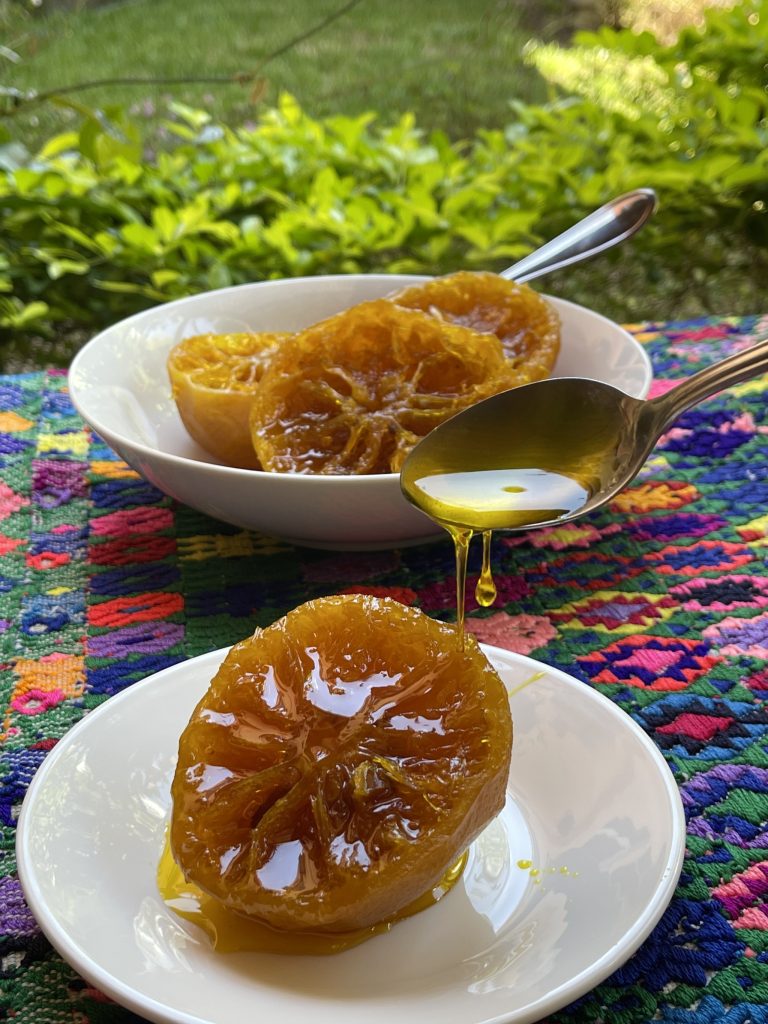
This orange dessert has a unique flavor; you will feel the sweetness of the honey made with sugar but with the combination of the slightly bitter and citrusy taste of the orange. You can enjoy your candied oranges as a treat, dessert topping, or a sweet addition to various dishes!
Naranjas en miel was one of my favorite treats growing up in Guatemala and this is one of the first Guatemalan recipes I learned to make so it holds a special place in my heart. The Guatemalan naranjas en miel recipe is more than just a sweet treat; it’s a link to my childhood and the rich culinary tradition of my country.
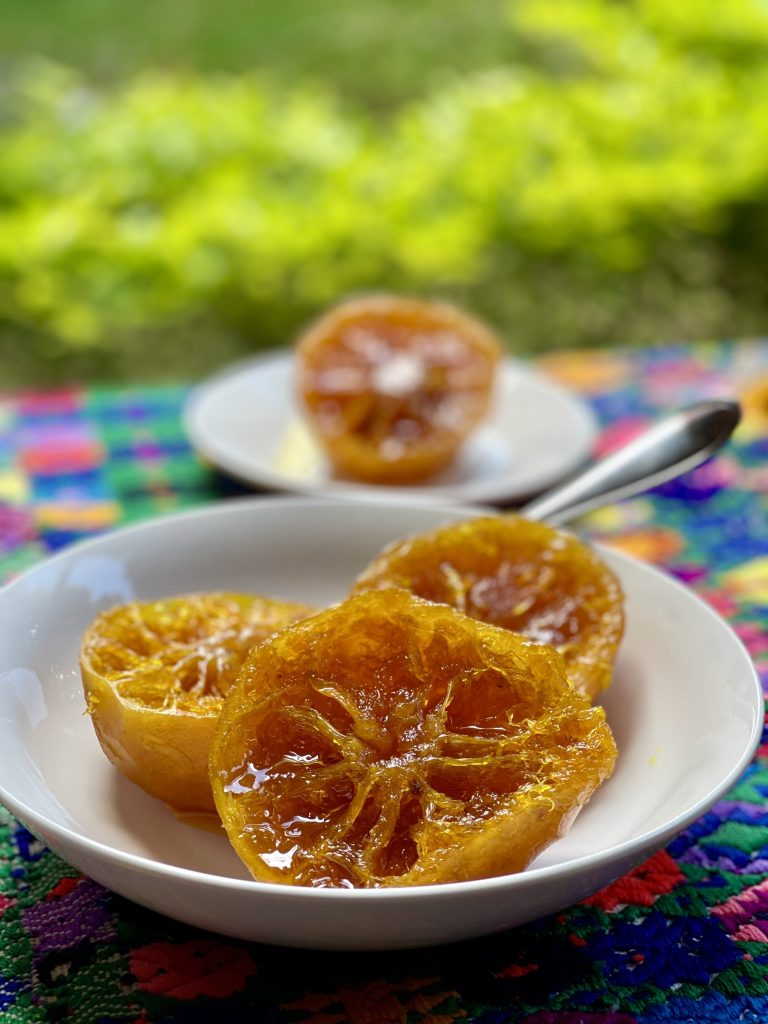
Making these candied oranges in syrup for my own kids has been a wonderful way to connect them to their heritage and share stories of my childhood. The process is simple but the result is incredibly rewarding – sweet, tangy oranges that are transformed into a glossy, sticky delight, perfect for enjoying on their own or as a topping for other desserts. It’s a joy to watch my children’s faces light up with the same excitement I felt as a child, knowing that I’m passing down a piece of our family’s history with every batch I make.
What are Candied Oranges or Naranjas en Miel
Candied oranges in syrup, or naranjas en miel, are a traditional sweet treat popularized in Guatemala. They are created by simmering orange slices or halves in a thick syrup until they become tender and sweetly infused. The syrup, typically a blend of sugar and water, may also be enhanced with cinnamon or other spices. This technique not only preserves the oranges but also imparts a delightful, candy-like texture to the fruit.
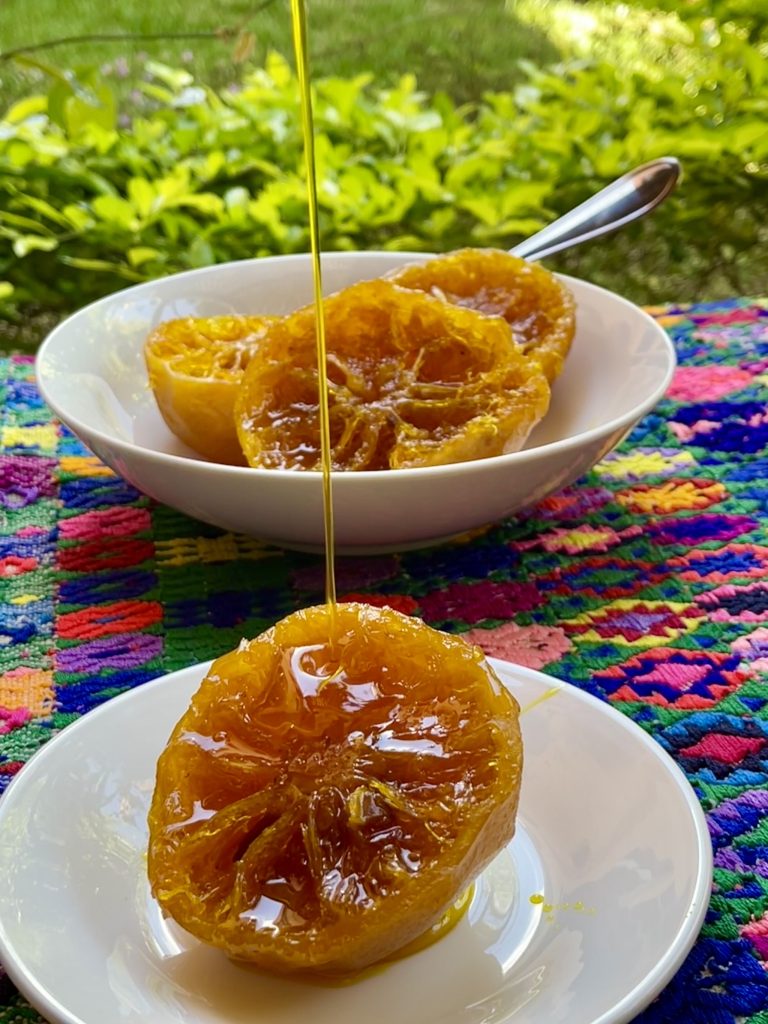
History of Candied Oranges
The tradition of making naranjas en miel in Guatemala can be traced back to the Spanish colonial era. Oranges, along with the method of candying fruits, were introduced to Guatemala by the Spanish. These oranges, not native to the Americas, became a favored ingredient in Guatemalan cuisine. Unlike other local foods that blended indigenous ingredients with Spanish influences, candied oranges in syrup are a direct adoption from Spanish candy-making traditions, showcasing the lasting impact of Spanish culture on Guatemala’s gastronomy.

Nowadays, naranjas en miel are a cherished Guatemalan dessert during festivals, fairs and fiestas patronales. They are also popular during Christmas in Guatemala.
Candied Oranges or Naranjas en Miel Variations:
There are also some traditional ways to add a twist to these candied oranges. One popular variation is to fill them with a coconut mixture, creating what’s known as naranjas rellenas de coco. This coconut mixture is very similar to the filling used in making cocadas reales, a type of traditional coconut candy. Another option is to stuff the candied oranges with marzipan, adding a sweet almond flavor to the mix. These variations offer a delightful way to customize candied oranges, making them even more special and delicious.
Recipe for Guatemalan Naranjas en Miel (Candied Oranges)
Ingredients:
- 10 oranges (preferably with thick skin for optimal results)
- ½ pound (about 225 grams) of sugar for each orange
Procedure:
-
Initial Preparation of Oranges:
-
-
- Start by cutting the oranges in half.
- Lightly scrape the surface of each half to reduce bitterness.
- Boil the oranges until they are soft. It’s crucial that the oranges are well-cooked to ensure they absorb the sugar properly.
- After cooking, remove the oranges from the heat and let them cool in the water they were boiled in. Do not drain the water; it helps the oranges retain moisture.
-
-
Desouring Process:
-
-
- Carefully remove the seeds from each orange half.
- Place the oranges in a sack or fine cloth bag. Tie the bag securely to ensure the oranges do not escape.
- Submerge the oranges in water for 24 hours. This step is crucial for reducing the natural bitterness of the oranges and preparing them for candying.
-
-
Candying the Oranges:
-
- Transfer the oranges to a large pot and add fresh water along with the appropriate amount of sugar.
- Cook over moderate heat, allowing the sugar to dissolve completely and penetrate the oranges. Cooking at a moderate heat is key to achieving even caramelization without burning the sugar.
- Continue cooking until the desired candying stage is reached, taking care not to move the oranges too much during this process to prevent the sugar from crystallizing on the surface.
- The candied oranges are ready to enjoy once they have cooled.
Tips for Making the Best Naranjas en Dulce or Candied Oranges in Syrup:
- Choose Local and Organic Oranges: It’s important to pick oranges that are from a local source and organic. This ensures that your candied oranges are not only delicious but also free from unwanted chemicals.
- Wash the Oranges Well: Since you’ll be eating the outer peel of the orange, it’s crucial to wash them thoroughly yourself. Make sure to scrub the skin gently but effectively to remove any dirt or residues.
- Remove the Bitterness: To reduce the natural bitterness of the orange peel, blanch the oranges before candying them. Boil them in water for a few minutes, then plunge them into cold water. Repeat this process a couple of times.
- Use the Right Sugar to Water Ratio: For a perfect syrup, balance is key. A common ratio is one part water to one part sugar, but you can adjust this according to how sweet you want your syrup.
- Simmer Slowly: Candying fruit is a slow process. Simmer the oranges in the syrup over low heat to ensure they absorb the sugar evenly without breaking apart.
- Let Them Soak: After cooking, let the candied oranges sit in the syrup for at least 24 hours before using or serving. This extra soaking time deepens the flavors.
- Store Properly: Keep your candied oranges in a cool, dry place. If stored in their syrup in an airtight container, they can last for weeks.
- Add Flavorings: Consider adding spices like cinnamon sticks, vanilla pods, or star anise to the syrup for extra flavor dimensions.
- Use a Candy Thermometer: For the best results, use a candy thermometer to monitor the syrup’s temperature. It should not exceed the soft ball stage (235-240°F or 112-115°C) to prevent the syrup from crystallizing.
- Experiment with Cuts: Slice the oranges in different ways – whole slices, half slices, or even in wedges – to find what works best for your preference and use.
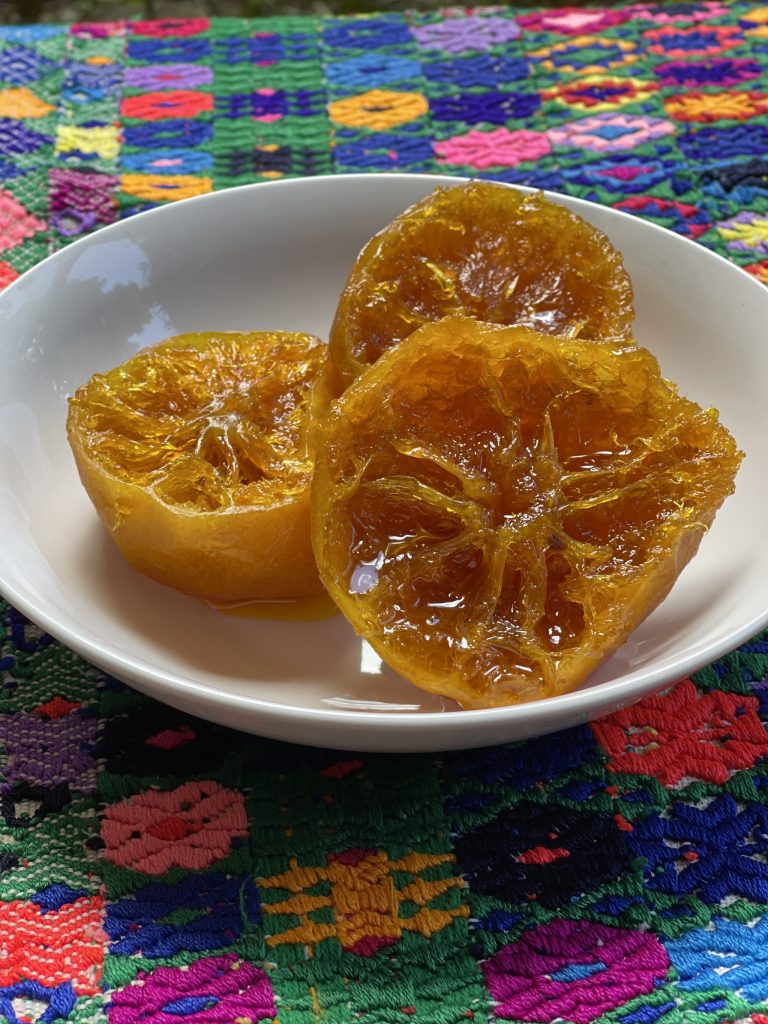
Following these tips can help you make the best naranjas en dulce or candied oranges in syrup, perfect for desserts, garnishes, or a sweet treat on their own.
Storing Candied Oranges in Syrup:
After making candied oranges in syrup, it’s important to store them correctly so you can enjoy them for as long as possible. Here’s how to do it:
- Cool Down: First, let the candied oranges cool completely after you finish cooking them. This helps prevent condensation from forming inside the storage container, which could make them soggy.
- Airtight Container: Once they’re cool, place the candied oranges along with the syrup in an airtight container. This could be a glass jar with a tight lid or a plastic container that seals well.
- Refrigerate: Put the airtight container in the refrigerator. The cool temperature slows down any spoilage and keeps the candied oranges fresh.
- How Long Do They Last? In the refrigerator, candied oranges in syrup can last up to 2-3 weeks. If you choose to freeze them, they can last for several months, making this a great way to keep them longer.
- Remember, always use a clean spoon when taking out some candied oranges to help prevent bacteria from getting into the jar.
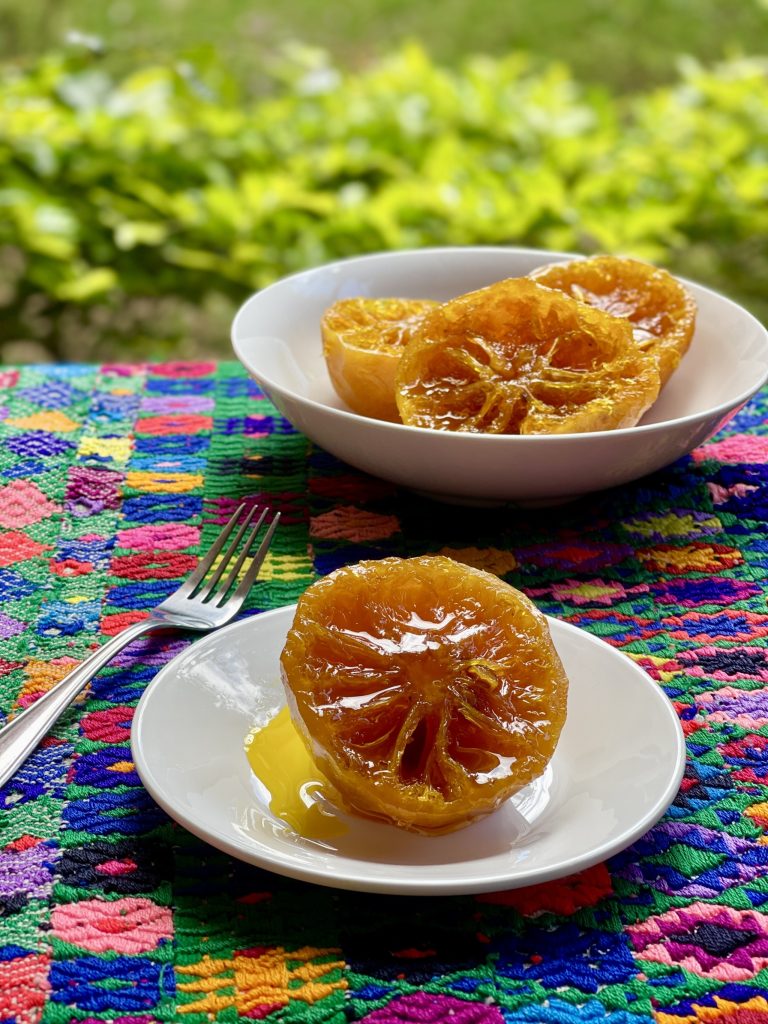
Can You Freeze Candied Oranges?
Yes, you can freeze candied oranges in syrup. To do this, make sure they’re in a freezer-safe container. Freezing can change their texture a bit, but they’ll still be tasty. When you’re ready to use them, let them thaw in the refrigerator.
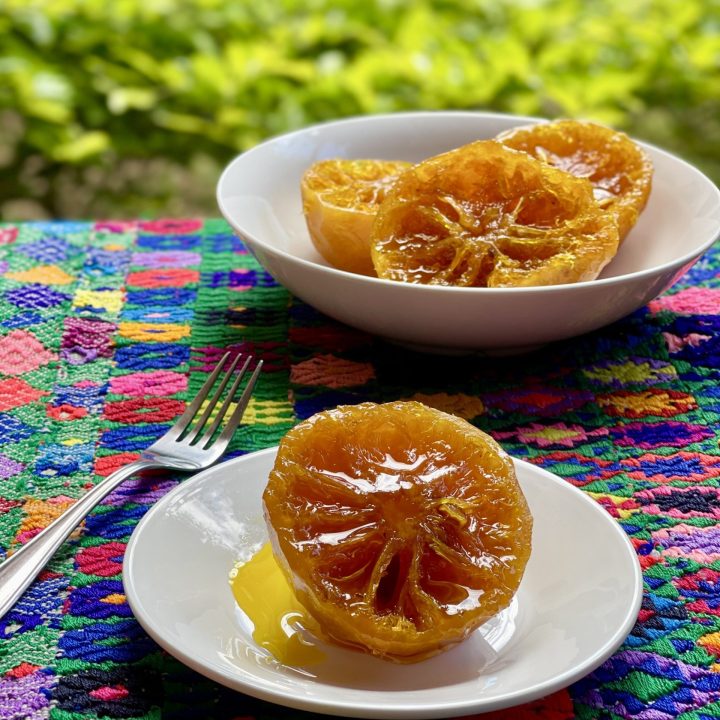
Guatemalan Naranjas en Miel Recipe (Candied Oranges Recipe)
Ingredients
- 10 oranges (preferably with thick skin for optimal results)
- 5 pounds of sugar
Instructions
Initial Preparation of Oranges:
- Start by cutting the oranges in half.
- Lightly scrape the surface of each half to reduce bitterness.
- Boil the oranges until they are soft. It's crucial that the oranges are well-cooked to ensure they absorb the sugar properly.
- After cooking, remove the oranges from the heat and let them cool in the water they were boiled in. Do not drain the water; it helps the oranges retain moisture.
Desouring Process:
- Carefully remove the seeds from each orange half.
- Place the oranges in a sack or fine cloth bag. Tie the bag securely to ensure the oranges do not escape.
- Submerge the oranges in water for 24 hours. This step is crucial for reducing the natural bitterness of the oranges and preparing them for candying.
Candying the Oranges:
- Transfer the oranges to a large pot and add fresh water along with the appropriate the sugar.
- Cook over moderate heat, allowing the sugar to dissolve completely and penetrate the oranges. Cooking at a moderate heat is key to achieving even caramelization without burning the sugar.
- Continue cooking until the desired candying stage is reached, taking care not to move the oranges too much during this process to prevent the sugar from crystallizing on the surface.
- The candied oranges are ready to enjoy once they have cooled.
Nutrition Information:
Yield: 22 Serving Size: 1 half orangeAmount Per Serving: Calories: 430Total Fat: 0gSaturated Fat: 0gTrans Fat: 0gUnsaturated Fat: 0gCholesterol: 0mgSodium: 2mgCarbohydrates: 111gFiber: 1gSugar: 108gProtein: 1g
Other Traditional Guatemalan Candy Recipes
Canillitas de Leche
The classic Guatemalan canillitas de leche is a traditional candy made with milk and sugar. Slightly harder on the outside, canillitas de leche are smooth and soft on the inside. When you pop them in your mouth, they melt effortlessly like magic.
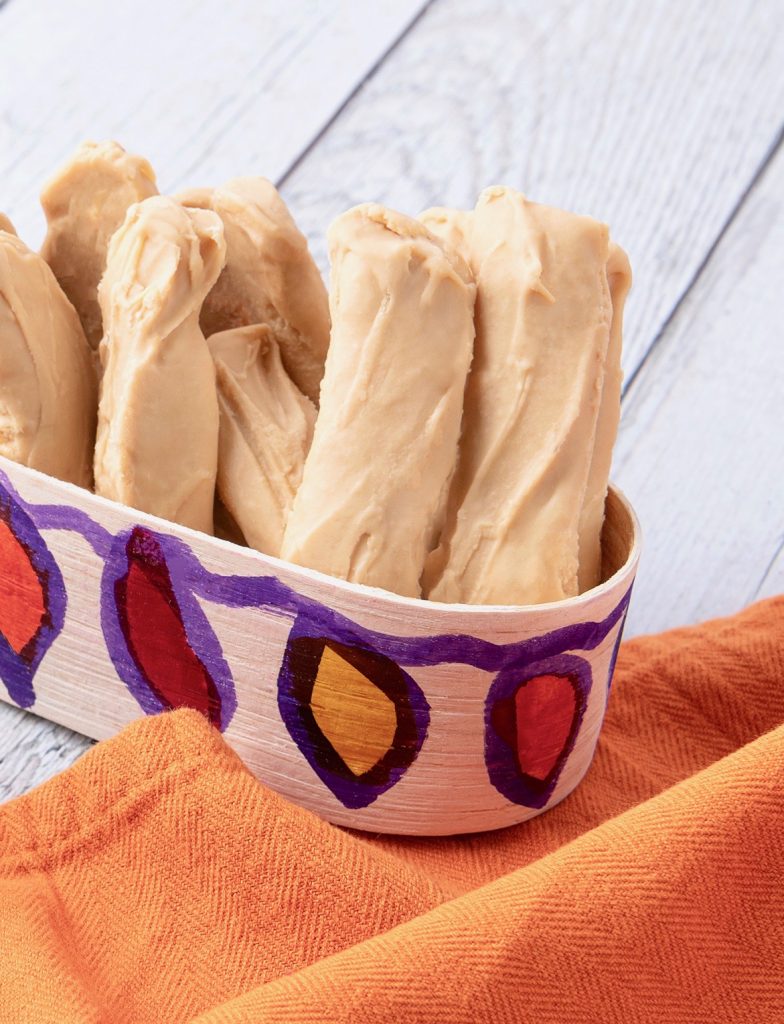
Guatemalan Fig Candy Recipe: Maleta de Higos
This is an easy recipe for guatemalan higos secos or higos cristalizados (dry sugared figs or crystalized figs) from Guatemala. This Guatemalan traditional candy is also referred to as maleta de higos (figs in a suitcase) because the sugared figs are usually served together in groups of four or five figs.
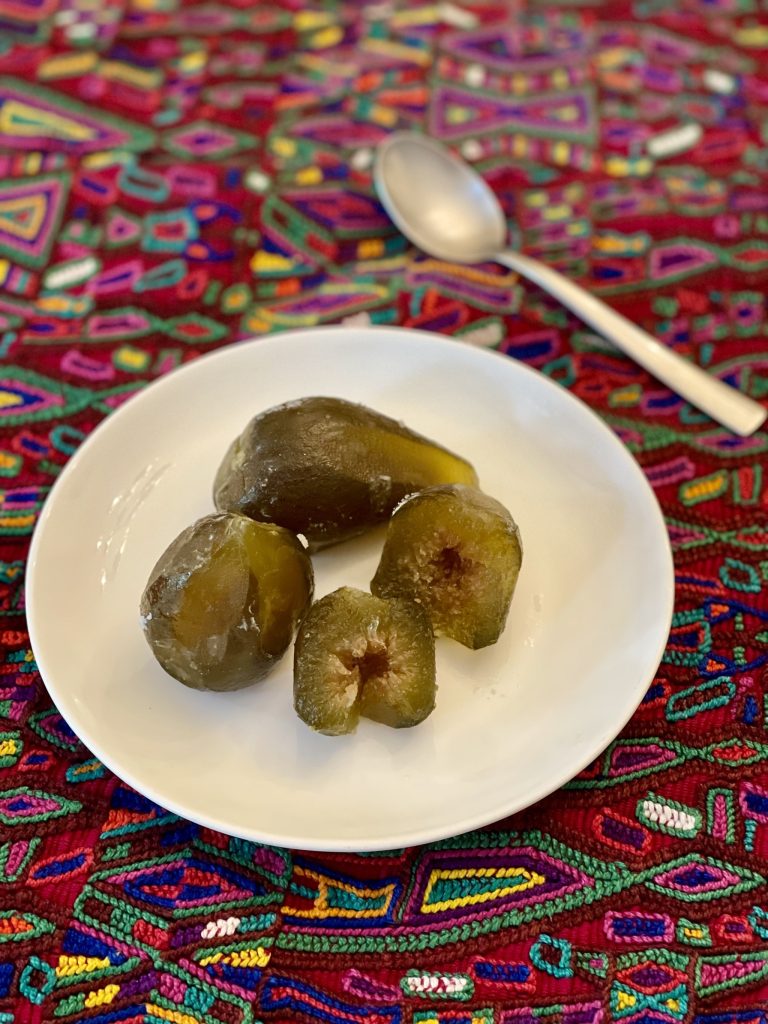
Traditional Guatemalan Coconut Candy: Cocadas Reales
This delicious traditional Guatemalan coconut candy recipe is one of my favorite Guatemalan candy. Known as cocadas reales this coconut candy is made with shredded coconut and condensed milk on the stove top. Chewy, sweet and deliciously soft this traditional Guatemalan candy is a sweet treat that you’re sure to fall in love with.
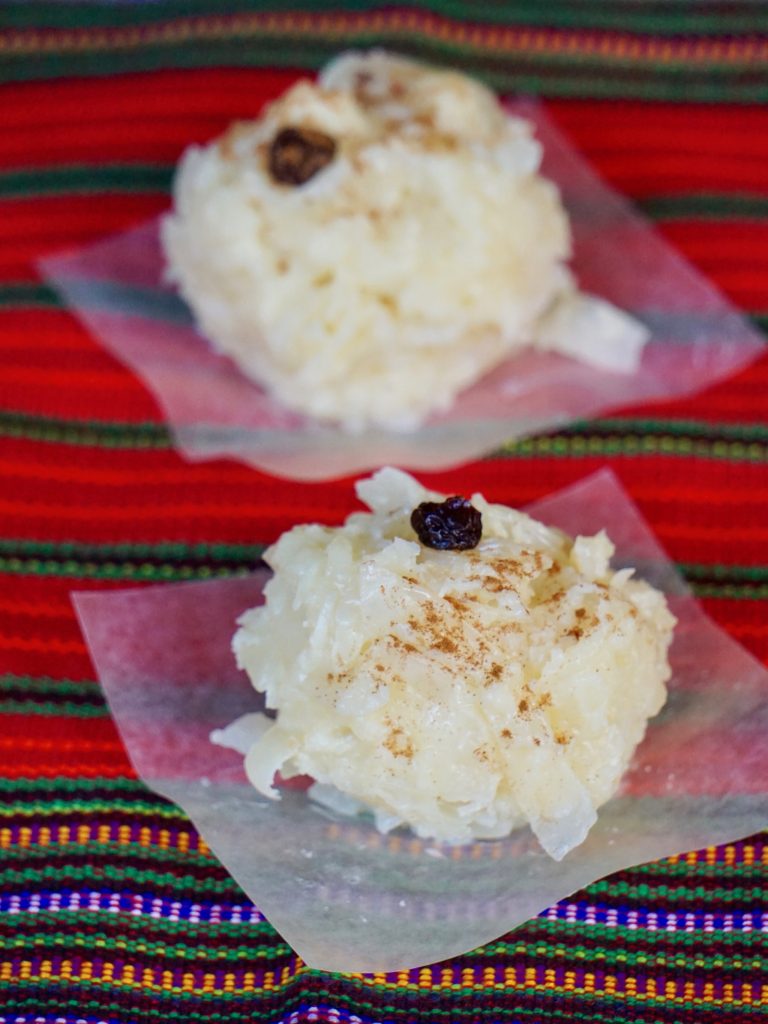
- Guatemalan Dulce de Chilacayote Recipe (Crystalized Chilacayote Candy) - February 26, 2024
- Guatemalan Naranjas en Miel Recipe (Candied Oranges Recipe) - February 25, 2024
- Traditional Guatemalan Candy - February 25, 2024


